Have you ever looked at a competitor’s website ranking high on Google and wondered, “How did they do it?”
Behind every successful website’s SEO strategy lies an important component: backlinks.
These links from external websites serve as endorsements of your content’s quality and authority in the eyes of search engines like Google. However, understanding your competitor’s backlink profiles is equally important.
In this post, we’ll discuss how to perform competitors’ backlink analysis in detail. So, without any further ado, let’s get started.
Table Of Contents
1 What is Competitor Backlinking?
Competitor backlinking, also known as competitor backlink analysis or competitor link analysis, refers to researching and analyzing the backlink profiles of your competitors’ websites.
Backlinks are links from other websites that point to your own. They play an important role in search engine optimization (SEO) by influencing your website’s authority, credibility, and ranking in search engine results pages (SERPs).
Competitor backlinking involves examining the quantity, quality, and diversity of backlinks directing traffic to your competitors’ websites.
But why should you analyze your competitor’s backlinks? Let us discuss it in the next section.
2 Why Analyzing Competitor’s Backlinks Matters?
By understanding your competitor’s backlink profiles, you gain insights into their SEO strategies, including where they’re getting their backlinks from, what types of websites link to them, and the anchor text used in those links.
Now you might think: Are there untapped sources of backlinks that can benefit your website’s SEO efforts?

Analyzing competitor’s backlinks helps you identify potential opportunities for your website. By examining the sources of their backlinks, you can uncover websites and platforms that may be willing to link to your content.
Furthermore, you can identify gaps in your competitor’s backlink profiles where they may lack coverage or visibility. This presents an opportunity for you to fill those gaps and gain a competitive advantage.
Additionally, you can learn from any mistakes or shortcomings in your competitor’s backlink profiles. This helps you avoid making similar missteps and refine your own approach to link building.
3 How to Perform Competitor’s Backlink Analysis
Let us now discuss the strategies for performing competitor’s backlink analysis.
3.1 Identify Your Competitors
Identifying and defining your competitors sets the foundation for a targeted and effective backlink analysis process.
So, clearly defining your competitors within your industry or niche is essential.
Start by identifying the key players in your field – those websites that consistently rank well for relevant keywords and attract a similar target audience.
These competitors can include both direct and indirect competitors.
Direct competitors are those offering similar products or services, targeting the same audience. Indirect competitors, on the other hand, may have different offerings but still cater to the same audience.
By understanding your competitors, you can better create your backlink analysis efforts to those most relevant to your own website’s goals and strategies.
For instance, if you operate an e-commerce website selling fitness equipment, your direct competitors might include other online retailers specializing in fitness gear, while your indirect competitors can be fitness influencers or blogs offering workout tips and advice.
You can do a simple Google search to identify your competitors or use tools like Ubersuggest free Backlink Checker or Ahrefs free Backlink Checker.
In the Ahrefs Backlink Checker tool, you can either enter the competitor’s site or the exact URL of their site. The Exact URL option allows you to find backlinks specifically pointing to a particular URL. This enables detailed analysis of a webpage’s backlink profile, helping to identify the sources of backlinks and the authority of referring domains.
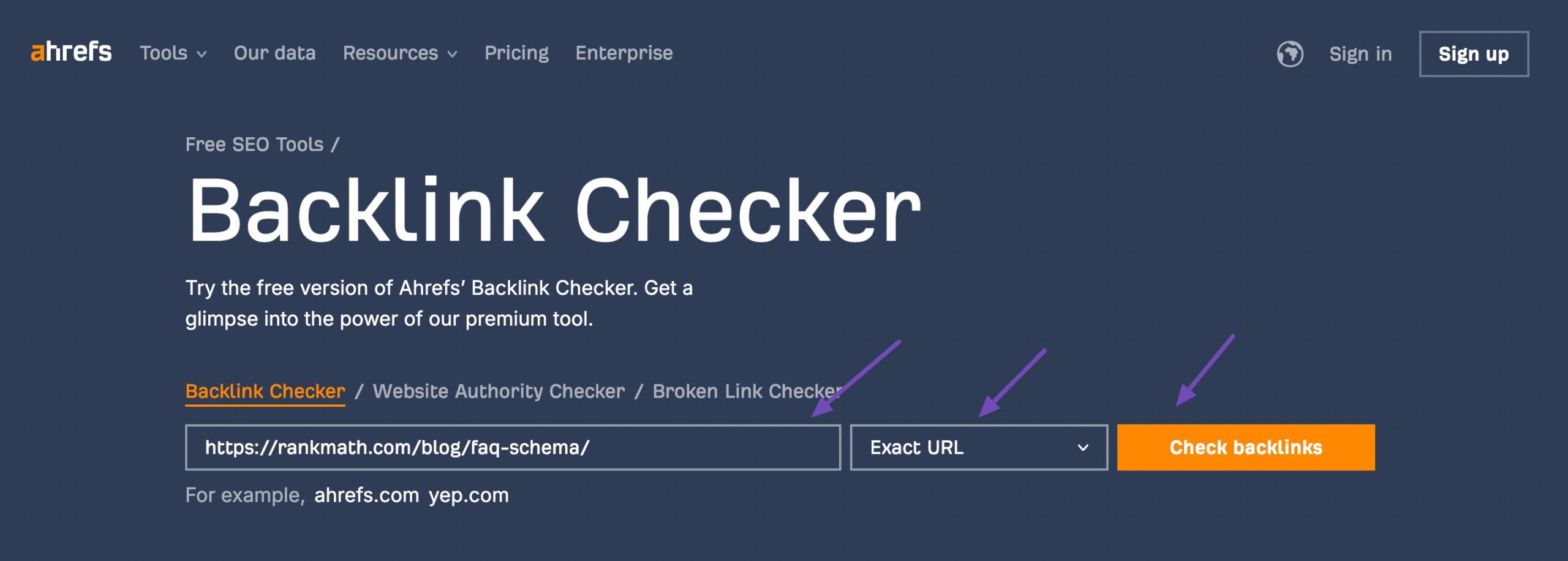
In the Ubersuggest Backlink Checker tool, enter your competitor’s domain or URL from their site. You’ll see the website’s total number of backlinks and referring domains.
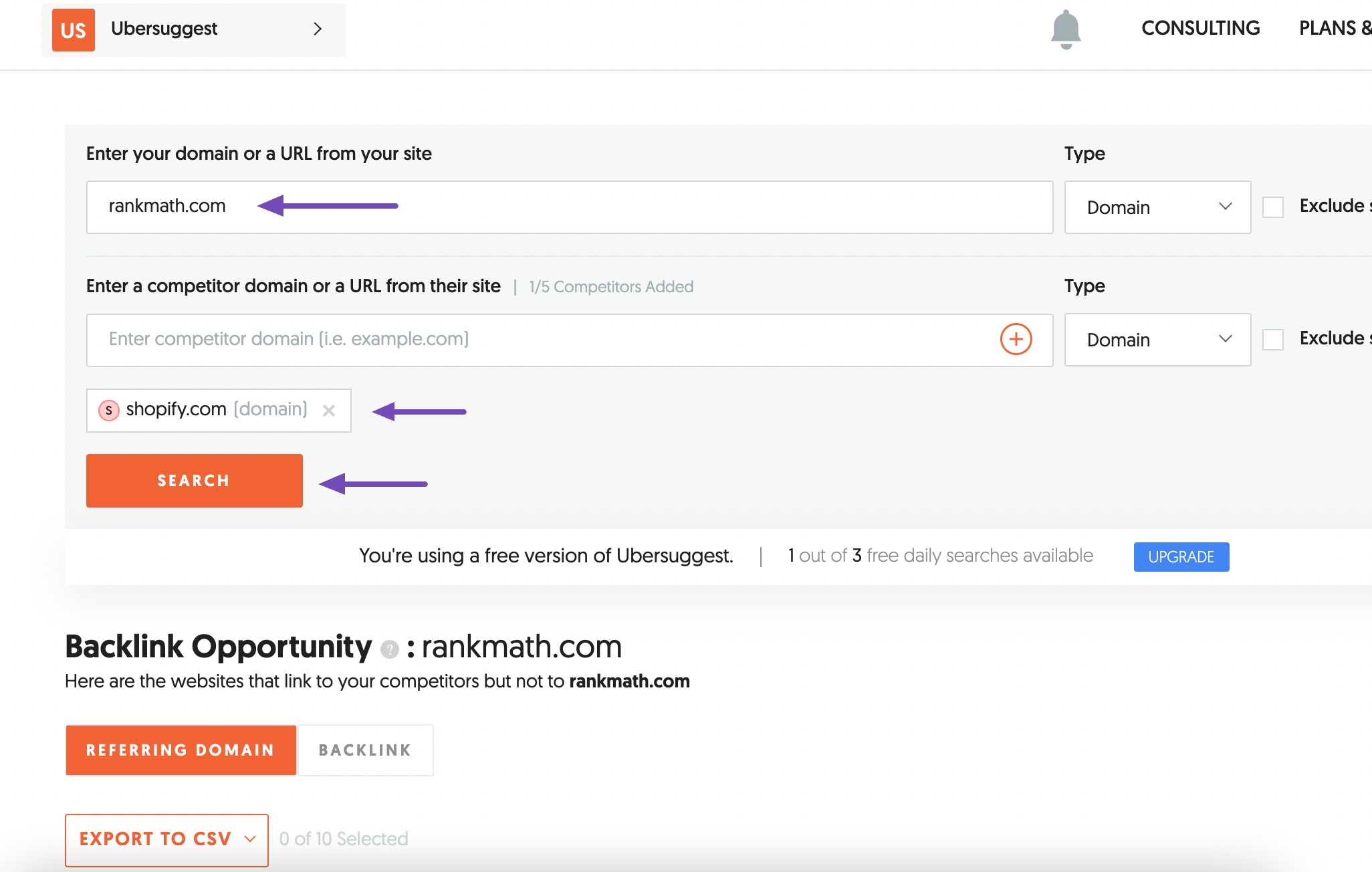
Ubersuggest provides various metrics for each backlink, including the domain authority of the linking site, the type of backlink (e.g., follow or nofollow), and the anchor text used.
You can then click on each competitor’s domain to explore their backlink profile further.

You can also use Bing Webmaster Tools to analyze your competitors’ backlinks. To do so, sign up and verify the ownership of your website on Bing.
You can easily verify your website using Rank Math. To do so, navigate to Rank Math SEO → General Settings → Webmaster Tools and add the HTML code or ID in the Bing Webmaster Tools field, as shown below.
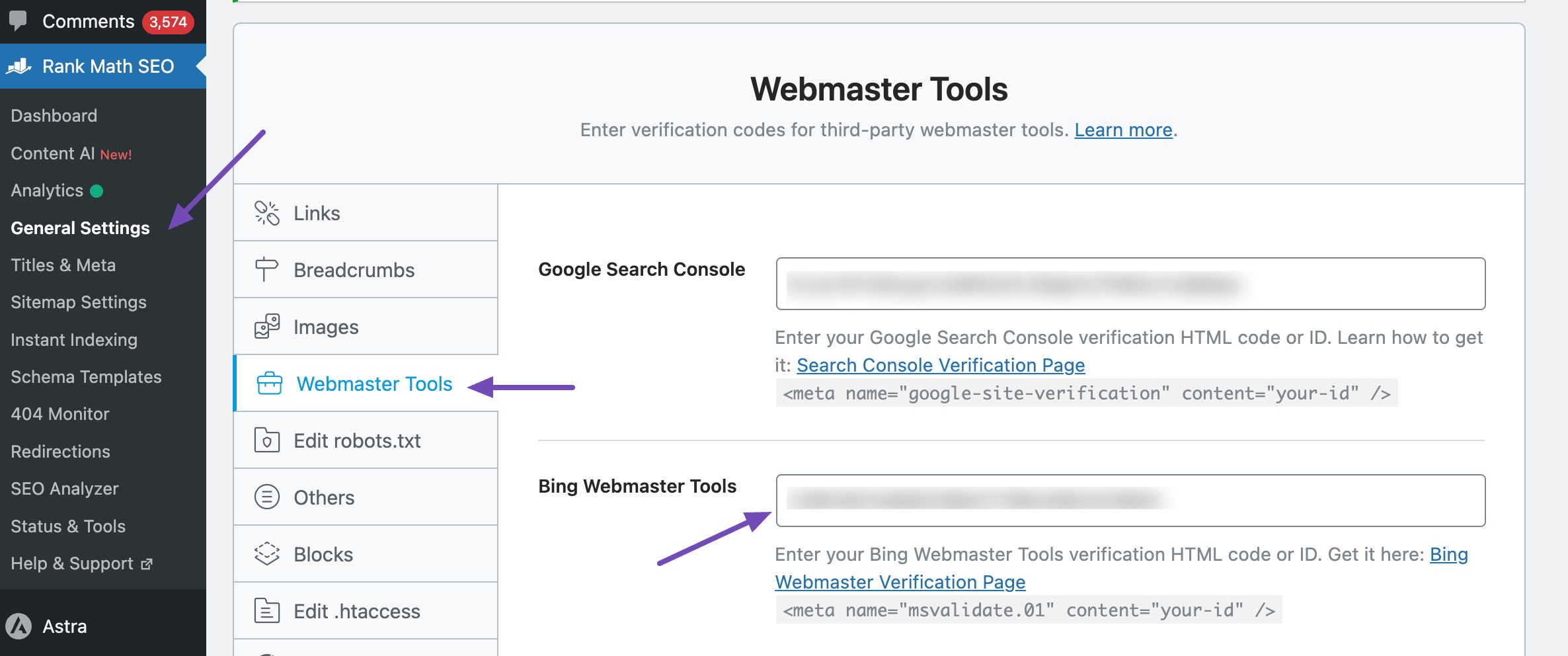
To check the backlinks of any website, navigate to the Backlinks To Any Site section and add your competitor’s website to check for backlinks. You’ll get an overview of the backlink report of the website in no time.
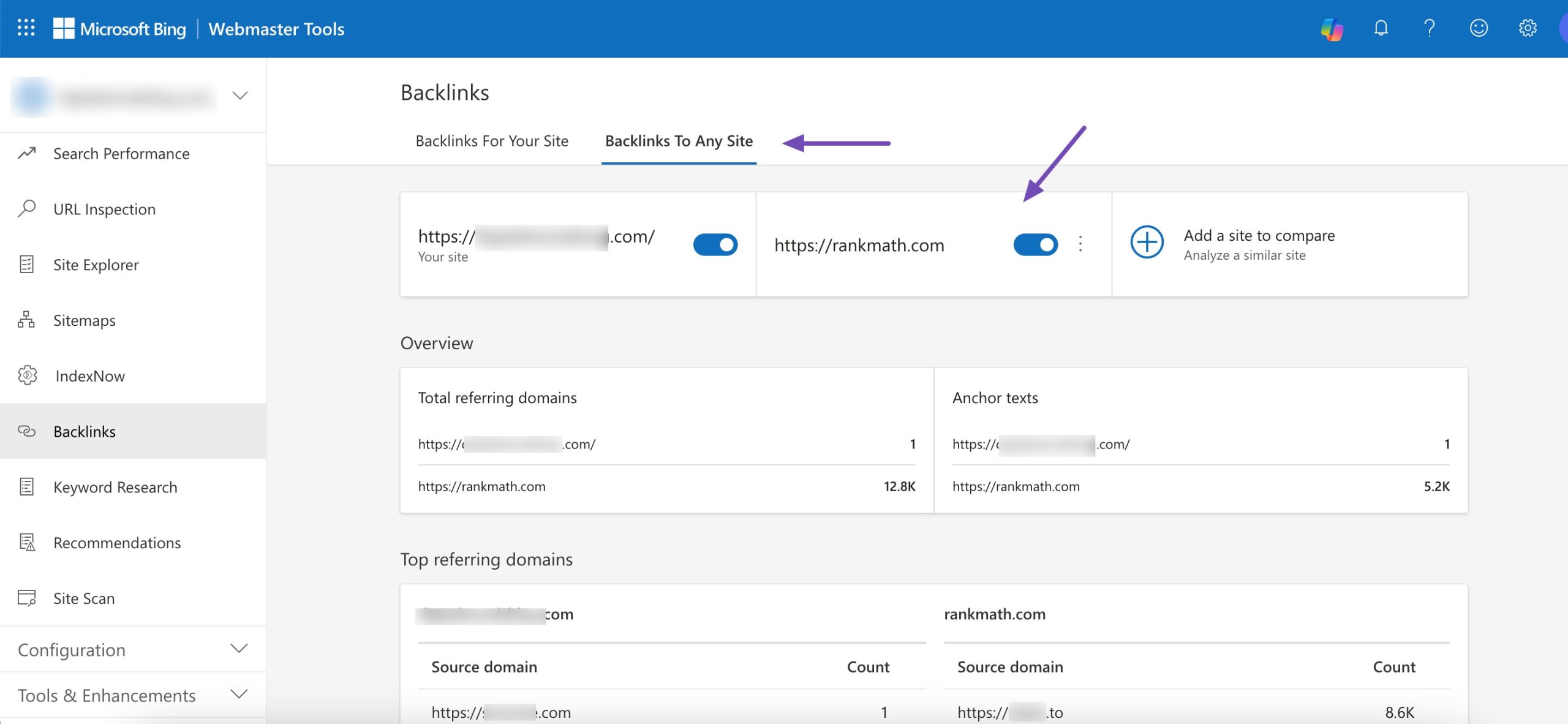
Refer to our dedicated tutorial on link-building to build your strategies.
3.2 Interpret and Analyze the Data
Once you have a list of your competitor’s backlinks, it’s time to interpret and analyze the data.

One primary goal of analyzing competitor’s backlink data is to identify high-value backlinks that can benefit your website’s SEO efforts.
Google’s algorithms identify and devalue low-quality links, emphasizing the importance of acquiring links from reputable and relevant sources to maintain a positive online reputation and visibility.

High-value backlinks come from authoritative and relevant websites within your industry or niche.
Also, check the domain authority and page authority of the linking sites. Aim to acquire backlinks from domains with higher authority scores to maximize the SEO benefits.
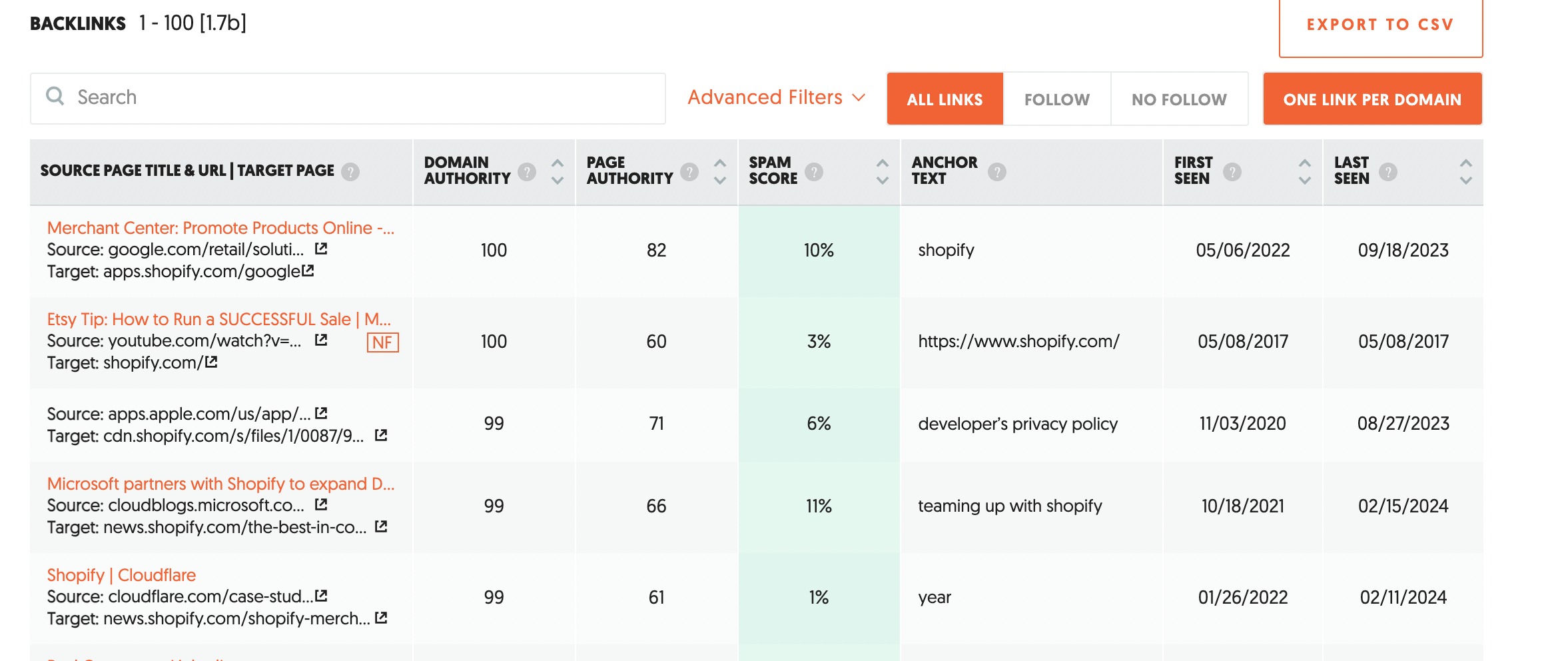
Analyze the anchor text to ensure a natural link profile. Avoid backlinks with overly optimized anchor text or exact-match keywords, as they may appear manipulative to search engines.
Export the backlink data for further analysis and action. You can reach out to similar websites to acquire backlinks for your own site or refine your link-building strategy.
3.3 Find Your Backlink Opportunities
By identifying domains linking to your competitors but not your own site, you can pinpoint opportunities to acquire backlinks and fill gaps in your backlink profile.

Try to find new and lost links in the backlink profile. Use the backlink checker tool to search for broken backlinks to pages similar to the ones you’ve identified.
Look for pages with a significant number of referring domains that return a 404 error or are no longer accessible.
Once you’ve identified the specific types of websites to target for backlinks, create compelling outreach messages and implement tactics to build relationships with potential linking domains.
4 Conclusion
Discovering your competitors’ backlinks can be a game-changer for your success.
Learning from their strategies and identifying valuable opportunities can strengthen your website’s presence and improve your search engine rankings.
Remember, the key is to find your competitor’s backlinks and use that information wisely to enhance your SEO efforts.
With the right strategies, you can use the power of competitor’s backlinks to take your website to new heights of visibility and success.
Keep exploring, learning, and adapting; you’ll be well on your way to dominating your niche online.
If you like this post, let us know by Tweeting @rankmathseo.
